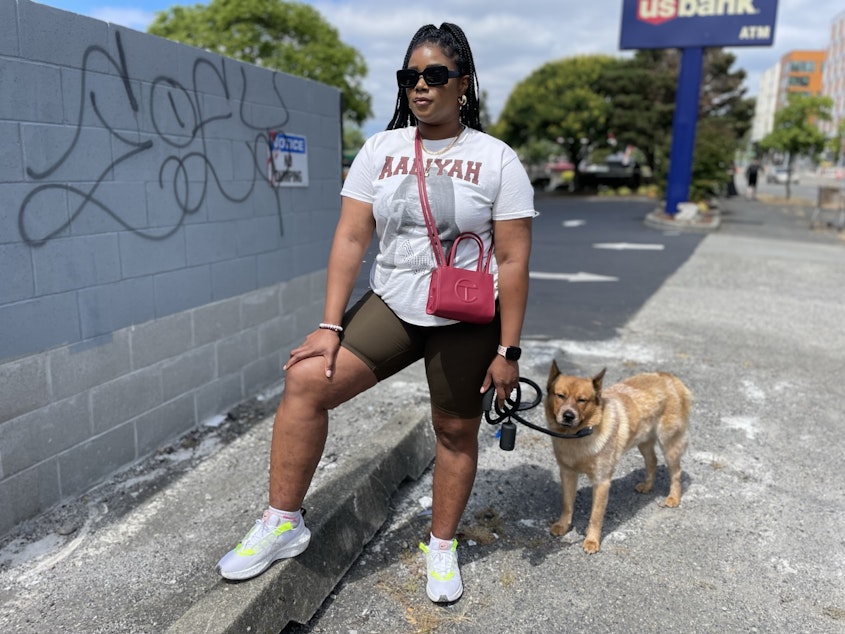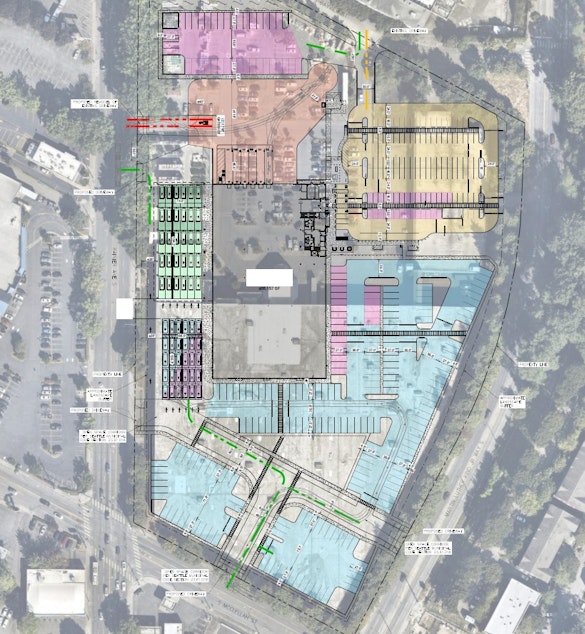Neighbors claim victory after Amazon abandons Rainier Valley warehouse plans

Seattle residents of the Rainier Valley cheered this weekend over news that Amazon will not build a new warehouse there.
The surprise news followed a year of controversy, after a developer closely associated with the company filed site plans with the city showing a warehouse at the site of the Lowe’s Home Improvement store.
The warehouse would have been two blocks from a light rail station – and right next to Franklin High School.
Travonna Thompson-Wiley works with a group called Creative Justice. She called for Amazon to pull the permit as proof that’s it’s truly scrapping the idea. She said this neighborhood is hurting and needs better opportunities than an Amazon warehouse provides.
“You know what our youth need? They need investments in programs with internships and apprenticeships. They need opportunities with funding their education. Instead of working at a shitty ass warehouse, making shitty ass minimum wage, and you’re literally scrapping and surviving. That’s what our youth don’t need.”
Related: Amazon faces opposition to possible warehouse near Seattle light rail station
Amazon has a pattern of putting warehouses in relatively lower-income communities, according to Kaveh Waddell, who wrote an investigative story on the topic for Consumer Reports in December of 2021, titled "When Amazon Expands, These Communities Pay the Price."
Sponsored

“We looked at Amazon warehouses all across the country,” Waddell told KUOW.
He compared Amazon warehouse locations with census data and pollution data. He said air quality around warehouses is negatively impacted by all the traffic they bring. And he said that two out of three Amazon warehouses are in places with a higher percentage of people of color than their metro regions.
In the Seattle metro area, the ratio is 3:4, he said.
“As Amazon has increasingly pushed to get packages to the consumer faster and faster, you know, next day and then same day, they’ve been building these 'last mile' facilities," Waddell said. These are warehouses that help get the package the last mile to your doorstep.
Sponsored
That kind of warehouse is much more likely to be in dense, urban areas. "And so that’s where you start butting up against residential areas that are going to be affected by the pollution emissions of these, and that’s when you start having these tradeoffs,” like missing the chance to build affordable housing on a huge property that’s just two blocks from the Mount Baker light rail station.

Eliza Pan was an Amazon employee up until 2019. Her focus at Amazon was on 'last mile' delivery. But since then, she’s become an opponent of the company’s expansion plans.
“Amazon has done this in communities across the country," she said on Saturday at a rally opposing the warehouse. "It often comes into neighborhoods quietly and secretly, and doesn’t show it’s actually developing a warehouse until it’s almost too late. And in this case, the community found out and started pushing back. And it wasn’t until Amazon heard...of this rally...this community letter, [that it decided], 'We’ve got to change our plans here.' And so the community has really won this victory."
Behind the scenes: Twitter thread after Amazon breaks the news
Sponsored
Amazon tells the story differently.
Company spokesperson Alisa Carroll told KUOW the decision not to pursue a warehouse was part of a routine decision-making process.
She said the company often investigates several sites at a time, and makes adjustments as needs change.
She pointed to a blog post emphasizing the company’s investments in affordable housing, including one project near the Mount Baker light rail station.
There’s another reason Amazon may have changed its mind.
Sponsored
When sales took off during the pandemic, Amazon aggressively added more warehouses.
But then, online sales slowed down this spring.
Amazon then decided it had too much warehouse space and chose to put some warehouse projects on hold.




